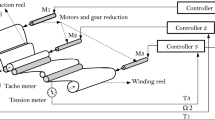Abstract
Based on the vital position of the endpoint prediction of converting, and the fact that the determination of its endpoint still depends on workers’ experience, this paper proposes a prediction model based on BP neural networks and extreme learning machines. Five models are included: (1) back propagation (BP) neural network, (2) genetic algorithm-optimized back propagation neural network (GABP), (3) extreme learning machines (ELM), (4) genetic algorithm-optimized extreme learning machines (GAELM), and (5) particle swarm optimization of extreme learning machine (PSOELM). Based on the historical production data of the Jinchuan Group, these models have been applied for the prediction of air delivery volume and air delivery time of the converter. By comparing the root mean square error (RMSE), goodness of fit (R2) and hit rate within ± 10% relative error range of each model, GAELM has the highest accuracy with a 93.12% hit rate for air delivery volume and a 93.65% hit rate for air delivery time, indicating that GAELM can effectively predict the end of the converter blowing, and provide a good reference for endpoint control and the determination of the nickel converter.








Similar content being viewed by others
References
J. Liu, Z. Zou, S. Zhong, S. Zhang, and H. Zhang, Ionics 27, 1501–1509 https://doi.org/10.1007/s11581-021-03925-1 (2021).
M.Q. Xue, Int. J. Surf. Sci. Eng. 4, 439–447 https://doi.org/10.1504/ijsurfse.2010.035146 (2010).
S. Hwang, J. Lee, U.G. Hong, J.G. Seo, J.C. Jung, D.J. Koh, H. Lim, C. Byun, and I.K. Song, J. Ind. Eng. Chem. 17, 154–157 https://doi.org/10.1016/j.jiec.2010.12.015 (2011).
K. Zhao, F. Gao, and Q.Y. Yang, J. Sustain. Metall. 8, 37–50 https://doi.org/10.1007/s40831-022-00501-3 (2022).
A.O. Bol’shikh, O.I. Tsybin, M.A. Bol’shikh, O.G. Kuznetsova, and A.M. Levin, Russ. Metall. 2020, 718–722 https://doi.org/10.1134/s0036029520070034 (2020).
L.R. Nelson, G.A. Georgalli, K.L. Hines, and R.J. Hundermark, Min. Process. Extract. Metall. 128, 134–159 https://doi.org/10.1080/25726641.2018.1506272 (2019).
G.A. Bezuidenhout, J.J. Eksteen, G. Akdogan, B. Van Beek, W. Wendt, and W. Persson, Miner. Eng. 100, 132–143 https://doi.org/10.1016/j.mineng.2016.10.024 (2017).
M. Han, and Y. Zhao, Expert Syst. Appl. 38, 14786–14798 https://doi.org/10.1016/j.eswa.2011.05.071 (2011).
F. He, and L.Y. Zhang, J. Process Control 66, 51–58 https://doi.org/10.1016/j.jprocont.2018.03.005 (2018).
C. Gao, M.G. Shen, X.P. Liu, L.D. Wang, and M.X. Chu, Complexity. https://doi.org/10.1155/2019/7408725 (2019).
J. Weiwei, W. Xuefeng, and W. Xi, Comput. Intell. Neurosci. https://doi.org/10.1155/2022/5108677 (2022).
B. Liu, and Y. Liu, Inorgan. Chem. Commun. https://doi.org/10.1016/j.inoche.2022.109846 (2022).
G. Du, Z. Liu, and H. Lu, J. Comput. Appl. Math. https://doi.org/10.1016/j.cam.2020.113260 (2021).
C. Pushuang, X. Liangyuan, T. Qiansheng, S. Lili, and L. Wei, Appl. Acoust. https://doi.org/10.1016/j.apacoust.2021.108411 (2022).
S. Wang, L. Wang, and F. Jian, J. Phys. Conf. Ser. https://doi.org/10.1088/1742-6596/1345/5/052065 (2019).
Z. Guobao, W. Yunhu, D. Qing, H. Yongming, M. Chunyan, X. Ruobing, and C. Lin, Int. J. Pattern Recognit. Artif. Intell. https://doi.org/10.1142/S0218001422510090 (2022).
Z. Leina, B. Yujia, Z. Sishi, W. Yanpeng, K. Jie, and Z. Wenxuan, Sustainability. https://doi.org/10.3390/su142416361 (2022).
V. Swati, K. Praveen, and T.M. Chandra, Commun. Soil Sci. Plant Anal. https://doi.org/10.1080/00103624.2022.2108828 (2023).
C.W. Siu, R.M.I.F. bin, Y.S. Bahar, F.L. Hui and A.M. Zaid, Jaciii (2022). https://doi.org/10.1590/1980-5373-MR-2021-0439
Acknowledgements
The authors are grateful to the financial support for this project from the National High Technology Research and Development Program of China (No. 2022YFC3902001), the Opening Project of State Key Laboratory of Nickel and Cobalt Resources Comprehensive Utilization and Guangxi Innovation-Driven Development Project (No. Gui 2021AA12006).
Author information
Authors and Affiliations
Corresponding author
Ethics declarations
Conflict of interest
The authors declare that they have no conflict of interest.
Additional information
Publisher's Note
Springer Nature remains neutral with regard to jurisdictional claims in published maps and institutional affiliations.
Rights and permissions
Springer Nature or its licensor (e.g. a society or other partner) holds exclusive rights to this article under a publishing agreement with the author(s) or other rightsholder(s); author self-archiving of the accepted manuscript version of this article is solely governed by the terms of such publishing agreement and applicable law.
About this article
Cite this article
Xing, J., Sun, F., Wang, L. et al. Prediction Model of Nickel Converter Based on Neural Network Algorithm. JOM 75, 4538–4549 (2023). https://doi.org/10.1007/s11837-023-05989-y
Received:
Accepted:
Published:
Issue Date:
DOI: https://doi.org/10.1007/s11837-023-05989-y




